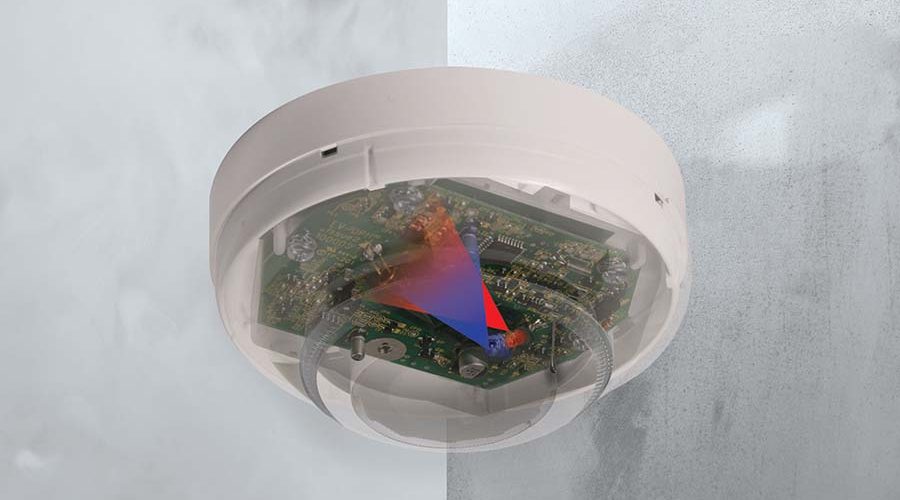Barry Sargent, Product Support Manager at Nittan, discusses multi-sensor fire detectors in non-domestic properties and looks at four important, but lesser known, aspects you should consider in relation to these devices.
Nittan
Multi-sensors combine two sensor types within one alarm. As different sensors detect different types of smoke and heat, and therefore different types of fire, combining more than one sensor in a single unit potentially makes for an improved response to real fires (as opposed to false alarms). It also reduces unit and installation costs, makes alarm specification far easier and looks better than having two alarms on the ceiling. As a result, the popularity of multi-sensors has increased dramatically.
That much you may well already be aware of, but here are four aspects of multi-sensors that you may not have considered before:
1. Multi-sensors vary in design, as does their ability
Like most things in life, you get what you pay for. Multi-sensors vary dramatically in design, from basic models where there is limited cross evaluation of the sensor values, through to highly sophisticated devices featuring advanced algorithms to assess the variation in values from each sensor in order to determine the nature of the potential fire. If you want to reap the benefits of a multi-sensor, don’t go for the lowest cost option.
2. Over one third of false alarms could be reduced if multi-sensors are used in place of single sensors
According to ‘Fire and rescue incident statistics, England, year ending March 2020’, of all incidents attended by fire and rescue services, fire false alarms made up 42% compared to actual fires at 28%. Reducing false alarms is imperative and one of the reasons for the development of the multi-sensor.
The Building Research Establishment’s (BRE) ‘The performance of multi-sensors in fire and false alarm tests’ Briefing Paper, reporting on its test of optical heat multi-sensor detectors, estimates that potentially 38.1% of observed false alarms could have been reduced if multi-sensors had been present.
3. Standard multi-sensors are not immune to non-combustion materials
Whilst offering improved performance over standard optical detectors, multi-sensors have limitations. In fact, the BRE research demonstrated that, although delayed, in all cases alarms were given from non-combustion materials such as steam, dust or aerosol. The delay might allow for any transient false alarm sources to disappear before the fire threshold is reached, but it does not entirely stop a false alarm in these instances. Furthermore, to ensure this delay, some multi-sensor detectors have been configured to be less sensitive.
4. Not all multi-sensors use one optical smoke and one heat sensor
Whilst smoke and heat sensors are the most common combination, there are others available. One of the lesser known combinations, but highly effective, is a heat sensor and two optical sensors, albeit each using very different sensor technologies – IR light plus blue LED – to provide a more accurate measurement of particles within the chamber.
Using a complex algorithm to calculate the ratio of these light sources, which operate at different wavelengths, the detector can determine the particle size and thus distinguish between smoke and non-combustion products such as steam, aerosols and dust. We take this approach in our Nittan EV-DPH multi-sensors. As we have seen above, this is where most typical multi-sensors struggle.







